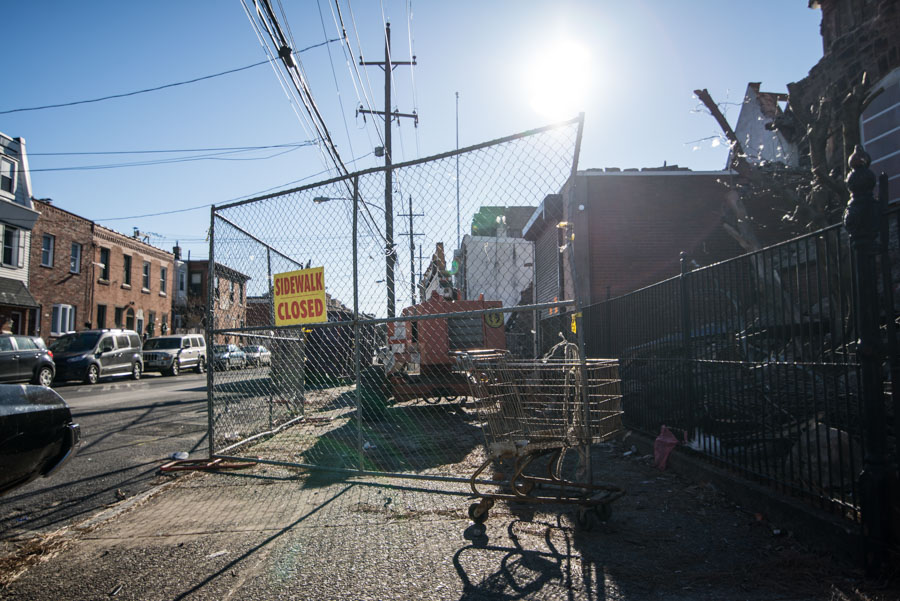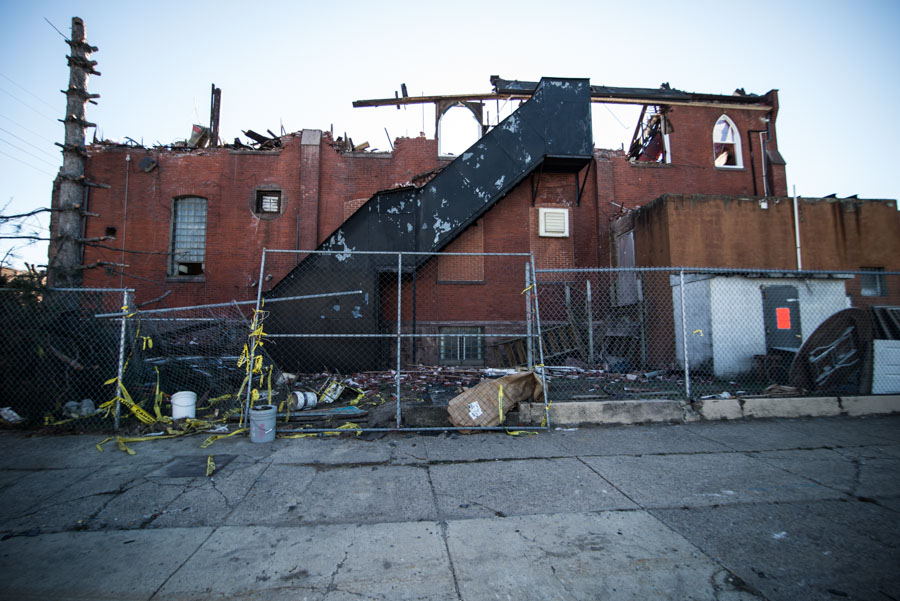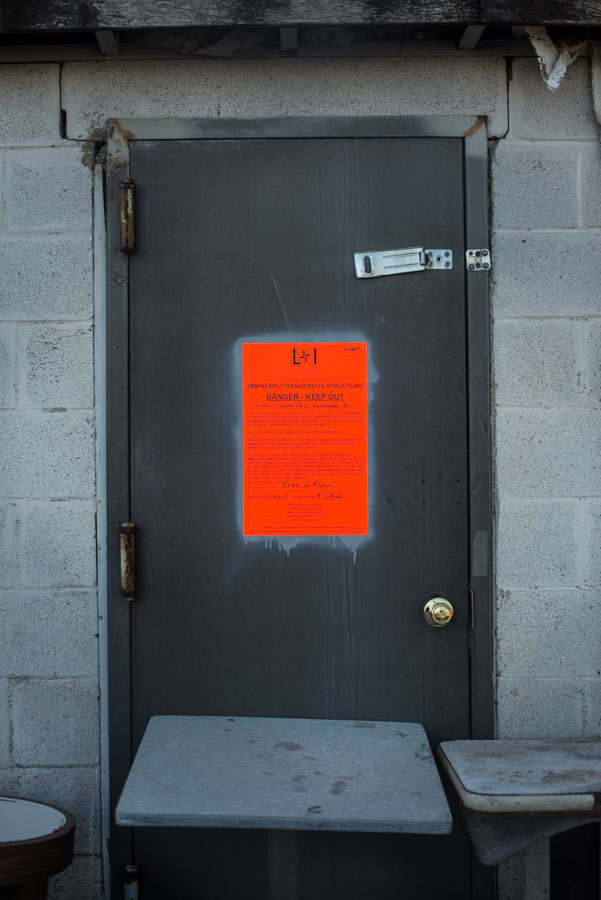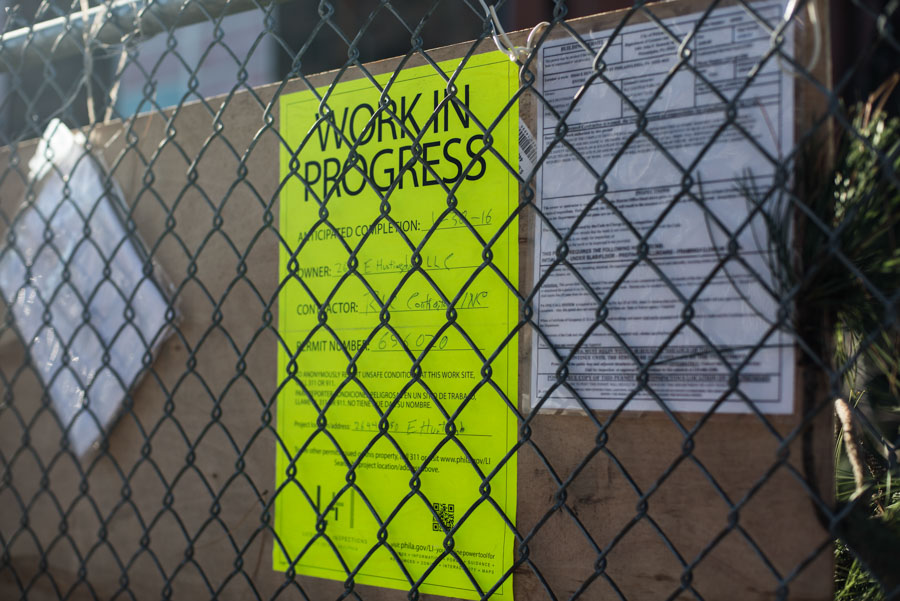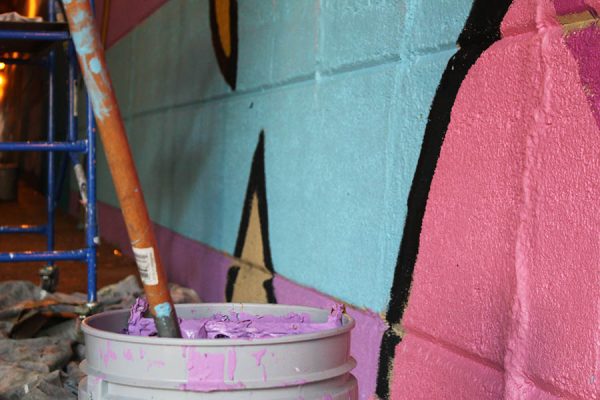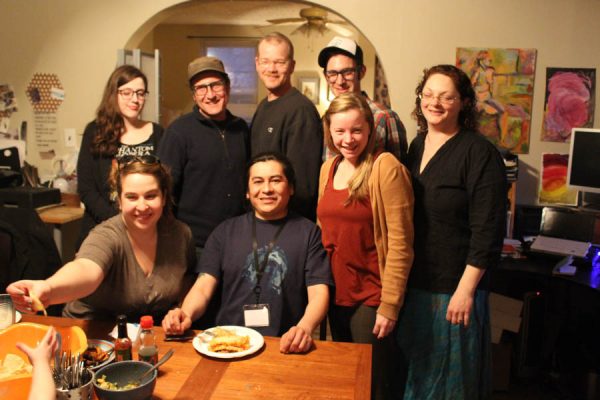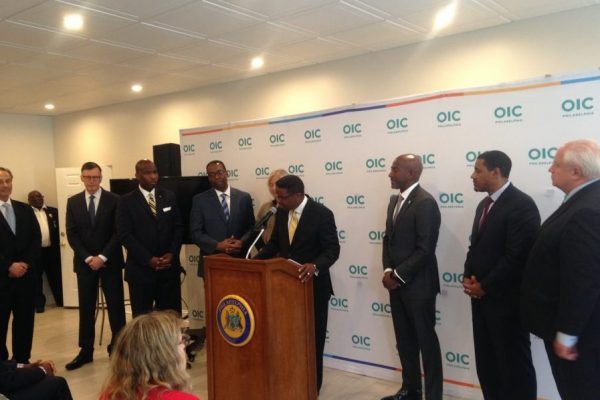Who Decides What is “Historic”? Olde Richmond Residents Rally, Gothic Revival Church/Nuisance Bar Razed Despite Historic Register Nomination
As 2015 came to a close, it took with it a dispute between the neighborhood of Olde Richmond and a 150-year-old church. In light of the Philadelphia Historical Commission’s decision not to add the Protestant Episcopal Church of the Messiah to its register of historic places, the building will be demolished over the coming weeks. It seems like the inverse of a TV Christmas special: the neighborhood banding together around the holidays to make sure the old church gets knocked down, urging the bulldozers on instead of standing in front of them.
But “church” describes this building in appearance only. According to information presented in its nomination to the register of historic places, although the building was constructed in 1848, 2646 E. Huntingdon hasn’t held a religious service since 1929. Instead, for most of the 20th century, the building functioned as a social club with bowling lanes, bocce courts and, perhaps most notably, bars.
Right up until the 1990s, the Protestant Episcopal Church of the Messiah, known at this point as the Adriatic Club or A.D. Club, was a place where people drank. This aspect of the building’s history affected its reputation in the neighborhood. In the collective memory of Olde Richmond, it seems that the building is generally regarded not as a church, but as a “nuisance bar.”
Though it was not the intended use of the building, the A.D. Club started out with the best of intentions. In October of 1988, The Daily News ran a small piece on the history of the venue. It was founded in 1932 when the church building was purchased by the Austrian Seacoast Beneficial and Benevolent Society, a name that stuck around into the 1990s despite the fact that Austria hasn’t had a coast since World War I. It was a place for families of members to have dinner on Sunday evenings, to play bocce and bowl. The main function of the club was to provide affordable insurance to members paid for by the monthly dues, a service that continued until the club closed in 1990.
But in the last half of the 20th century the A.D. Club existed mainly as an after-hours bar with patrons drinking late into the night and disturbing the peace. This incarnation of the church site is what built its unfavorable reputation among the neighborhood of Olde Richmond. This notoriety, coupled with years of neglect to the structural integrity of the property, has swayed the neighborhood against any repurposing of the existing structure.
Chris Sawyer, zoning chairman for the Olde Richmond Civic Association (ORCA), asserts that the organization and neighborhood has been fighting nightclub/event space uses for the building for more than 20 years, ever since the A.D. Club closed its doors. Perhaps the most notable evidence of this resistance can be found on a lengthy 2012 thread on Fishtown.us titled “Get Your Drink on at the ORCA Nightclub.”
So, on December 11th, the Philadelphia Historical Commission voted unanimously against adding the church at Huntingdon and Thompson to the historic register. The decision was influenced by a recent ruling from the Department of Licenses and Inspections, which deemed the structure unsafe. Indeed, by the morning of the 11th, demolition of the church was already underway. According to John Farnham, Director of the Historical Commission, although the church met other criteria necessary to be considered for addition to the register, because the demolition was already in progress, the historical merit of the church was not considered in the ruling.
These merits are that the church was designed by John Notman, a revered Philadelphia architect, in the Gothic Revival style. Notman is known for a number of Philadelphia landmarks including the Laurel Hill Cemetery and St. Mark’s Church at 16th and Locust. These aspects of the church’s history satisfy two areas of the criteria for historic designation: (1) the church “Reflects the environment in an era characterized by a distinctive architectural style” and (2) “Is the work of a designer, architect, landscape architect or designer, or engineer whose work has significantly influenced the historical, architectural, economic, social, or cultural development of the City, Commonwealth or Nation.”
So, according to the criteria laid out by the Historical Commission, this is a historic building. But this seems to be a case of too little, too late. Years of neglect and inappropriate repurposing pushed the Protestant Episcopal Church of the Messiah beyond salvation. Indeed, the nomination authored by Andrew Fearon came only after talks of demolition had begun, which prompted Sawyer to suggest the Registered Community Organizations such as ORCA be notified before nominations to the historic register are brought before the Historical Commission. It’s an interesting suggestion and it asks the question, who decides if a building is historic? Is it the people who make up the neighborhood surrounding the historic building or is it the people who help govern the city around that building? Can it be both? As development continues to change the face of these historic neighborhoods, it’s a question that deserves more and more attention.
With the original building gone, this struggle to resist commercial use on this property becomes much easier for the residents. Only a small portion of the lot is zoned for commercial use (CMX-2) while the rest is zoned RSA-5, a designation that includes single family homes. Ori Feibush of OCF Realty is the expected buyer of the land and plans to develop it over the course of 2016. Feibush says that additional community input is needed before determining exactly what gets built. Project ideas will be vetted at ORCA zoning meetings over the coming months.

